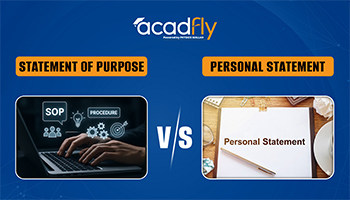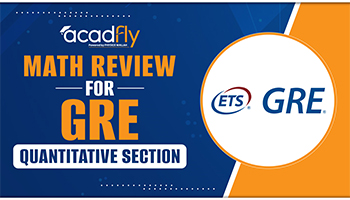
GMAT Cutoff 2025, a vital entry for many aspiring MBA and business master's candidates, is not a static, universally defined figure; rather, it represents the minimum GMAT score that an individual business school typically expects or accepts from its successful applicants for a given intake year. This GMAT Cutoff 2025 is highly variable, fluctuating based on several dynamic factors, including the strength and size of the applicant pool, the specific course’s competitiveness, the school's overall ranking aspirations, and even year-on-year changes in their admissions strategy.
Therefore, aspiring candidates should understand that there isn't a single, published 'GMAT Cutoff 2025' that applies across all institutions; instead, the most effective approach is to research the average GMAT scores of admitted students for their target programs in previous years and aim to score comfortably above these averages, recognizing that a strong score is just one crucial component within a holistic application review.
Understanding GMAT Cutoffs (or Averages) for 2025
Before we dive into region-specific details, let's clarify what these "cutoffs" represent for the GMAT cutoff 2025. Business schools typically don't set a hard minimum score below which your application is automatically rejected. Instead, they aim to build a diverse class of highly qualified individuals.
For the 2025 intake, these averages are likely to remain consistent with recent trends, with slight fluctuations based on the applicant pool's strength in any given year. A score within or above the average range of your target school significantly strengthens your application. If your score falls below the average, you'll need to compensate with an exceptionally strong profile in other areas to demonstrate your capability and potential.
Key factors influencing the required GMAT Cutoff 2025 include:
A GMAT score is vital for getting into top universities and colleges. Numerous factors influence the GMAT Score. Let us look at some of these factors
-
School Ranking and Prestige: Top-ranked schools consistently command higher average GMAT scores.
-
Program Type: MBA programs often require higher GMAT scores than specialized master's programs (e.g., Master's in Management, Master's in Finance), though this can vary.
-
Applicant Volume and Quality: More competitive programs receive a larger number of high-scoring applicants, driving up the average.
-
Your Overall Profile: Exceptional work experience, a high GPA, unique achievements, or compelling essays can sometimes offset a slightly lower GMAT score.
GMAT cutoff 2025 for the United States of America (USA)
The USA has the greatest number of highly ranked business schools in the world, and as a result, normally has the highest GMAT Cutoff 2025 averages. Prospective students looking for a highly ranked MBA in the US must strive for scores well into the higher 600s, and top programs comfortably accept classes with averages from 720-740. The GMAT cut-off 2025 USA will not be absolute, but such competitive scores are required to be in the limelight.
Expected Average GMAT Scores for Top US Business Schools (2025 Class)
The following is a glimpse of the expected average GMAT scores for some top US business schools for their 2025 class, based on recent admission statistics:
|
Business School |
Anticipated Average GMAT Cutoff 2025 (Range) |
|
Stanford Graduate School of Business |
730-740 |
|
Harvard Business School |
730-735 |
|
The Wharton School (UPenn) |
725-735 |
|
Chicago Booth School of Business |
720-730 |
|
MIT Sloan School of Management |
720-730 |
|
Columbia Business School |
720-730 |
|
Kellogg School of Management (Northwestern) |
710-720 |
|
NYU Stern School of Business |
710-720 |
|
Yale School of Management |
705-715 |
|
UCLA Anderson School of Management |
690-710 |
GMAT cutoff 2025 for Europe
Europe is today a center for business school education in terms of innovative courses, diverse student Intakes, and frequently more compact, shorter MBA programs. Best schools such as INSEAD, London Business School, and HEC Paris are global brand names attracting very talented students. The GMAT cut-off 2025 Europe at these best schools is very high, usually comparable to the best US business schools. However, there is a significant spread throughout the continent, and several good schools have average GMATs of 650-700.
Projected Average GMAT Scores of the Best European Business Schools (2025 Intake)
The following table represents the expected average GMAT scores for some top European business schools for their 2025 class, based on recent admission statistics:
|
Business School |
Anticipated Average GMAT Cutoff 2025 (Range) |
|
INSEAD |
700-720 |
|
London Business School (LBS) |
700-720 |
|
HEC Paris |
690-710 |
|
IESE Business School |
680-700 |
|
IE Business School |
670-690 |
|
University of Cambridge (Judge Business School) |
680-700 |
|
University of Oxford (Saïd Business School) |
680-700 |
|
SDA Bocconi School of Management |
660-680 |
|
ESCP Business School |
650-670 |
GMAT cutoff 2025 in Canada
Canada is a highly coveted choice for foreign students looking for quality business education and, frequently, softer post-graduation work opportunities. Canadian business schools have rigorous study programs and well-established industry networks within North America. Although extremely competitive, the GMAT cut-off 2025 Canada of some of its best programs at times will be less stringent than the strictly best US programs, and hence represent an incredible value proposition.
Predicted Average GMAT Scores of Leading Canadian Business Schools (2025 Intake)
The following is a glimpse of the expected average GMAT scores for some top Canadian business schools for their 2025 class, based on recent admission statistics:
|
Business School |
Program |
Anticipated Average GMAT Cutoff 2025 (Range) |
|
Rotman School of Management (University of Toronto) |
MBA |
660-670 |
|
Ivey Business School (Western University) |
MBA |
650-660 |
|
Desautels Faculty of Management (McGill University) |
MBA |
650-660 |
|
Sauder School of Business (UBC) |
MBA |
640-650 |
|
Schulich School of Business (York University) |
MBA |
630-640 |
Also refer GMAT Cut Off for Canada for Indian Students
GMAT cutoff 2025 Australia
Australia provides a special mix of high-quality education and a dynamic, multicultural way of living. Its business schools are also becoming increasingly popular globally, especially for their emphasis on relations with the Asia-Pacific community and global business and innovation. For the Australian GMAT cutoff 2025, the candidates can expect similar scores, though generally slightly lower than the leading North American and European institutions.
Projected Average GMAT Scores of Australia's Top Business Schools (2025 Intake)
The following is a glimpse of the expected average GMAT scores for some of Australia’s top business schools for their 2025 class, based on recent admission statistics:
|
Business School |
Anticipated Average GMAT Score (Range) |
|
Melbourne Business School (University of Melbourne) |
660-680 |
|
AGSM Business School (UNSW) |
650-670 |
|
UQ Business School (University of Queensland) |
630-650 |
|
Sydney Business School (University of Sydney) |
620-640 |
Also refer Minimum GMAT Scores Required for MBA in Australia
GMAT Cutoff 2025 for Asia
Asia is increasingly a hub for business schooling, and some schools in Singapore, Hong Kong, China, and India are appearing in international rankings. The schools provide distinct access to developing economies in Asia and international students. The GMAT cutoff 2025 Asia for top schools in the region is increasingly becoming challenging, with evidence of their rising popularity and profile.
Expected Average GMAT Scores of Leading Asian Business Schools (2025 Batch)
The following is a glimpse of the expected average GMAT scores for some top Asian business schools for their 2025 class, based on recent admission statistics
|
Business School |
Program |
Anticipated Average GMAT Cutoff 2025 (Range) |
|
INSEAD (Asia Campus - Singapore) |
MBA |
700-720 |
|
National University of Singapore (NUS Business School) |
MBA |
670-690 |
|
Nanyang Business School (NTU, Singapore) |
MBA |
650-670 |
|
HKUST Business School (Hong Kong) |
MBA |
650-670 |
|
CEIBS (China Europe International Business School) |
MBA |
680-700 |
|
Indian School of Business (ISB) |
PGP (MBA equivalent) |
690-710 |
|
Fudan University School of Management |
MBA |
630-650 |
Beyond the GMAT Cutoff 2025: A Holistic Review
Although the GMAT cutoff 2025 is important, remember that it is not the only deciding factor for your admission. Business schools prefer a holistic review, where they take into account all aspects of your application to assess your potential to enrich the diversity of their study population and your potential as a future leader.
Factors that can support your application even if your GMAT score falls a little short of average are:
-
Strong Academic Performance: A High undergraduate GPA, particularly in quantitative fields, can show academic ability.
-
Quality Work Experience: Progressive, appropriate, and significant work experience that indicates leadership, problem-solving, and teamwork is especially well regarded.
-
Strong Essays: Your essays are your chance to share your distinctive story, articulate your inspirations, and describe your career objectives and why one specific program is ideal for you.
-
Strong Recommendations: Letters of recommendation from supervisors or mentors who can testify to your professional abilities and character.
-
Strong Extracurricular Activities: Showing leadership, volunteerism, or unusual interests outside the workplace.
-
Good Interview Performance: A time to express your personality, communication abilities, and ability to adapt to the school environment.
-
Diversity: Schools want diverse groups in nationality, industry, background, and outlook.
Also refer: GMAT Exam Structure and Scoring Tips
To cope with the admissions world of 2025, there has to be some foresight, and knowing the likely GMAT cutoff 2025 of the schools you wish to attend is a fine starting point. Though these are a useful guideline, remember that they are averages, not strict necessities. Try and score as much as possible, with enough time to prepare for the GMAT. But also focus on developing a strong, balanced application that emphasizes your particular strengths, achievements, and goals.
By pairing up a solid GMAT Cutoff 2025 with a solid resume, reflective essays, and good recommendations, you might be able to push your way towards acceptance at your top business school, wherever that may be in the world. Plan, research the schools to which you are applying, and put it all out there before turning it in to the admissions committee.
GMAT Cut Off 2025 FAQS
What is the lowest GMAT score for a high school for admission in 2025?
Will I get into a good school with a lower-than-average score?
Are GMAT cutoffs (or averages) revised annually?
Is a higher GMAT score preferred?
How critical is the GMAT in MBA admissions?









